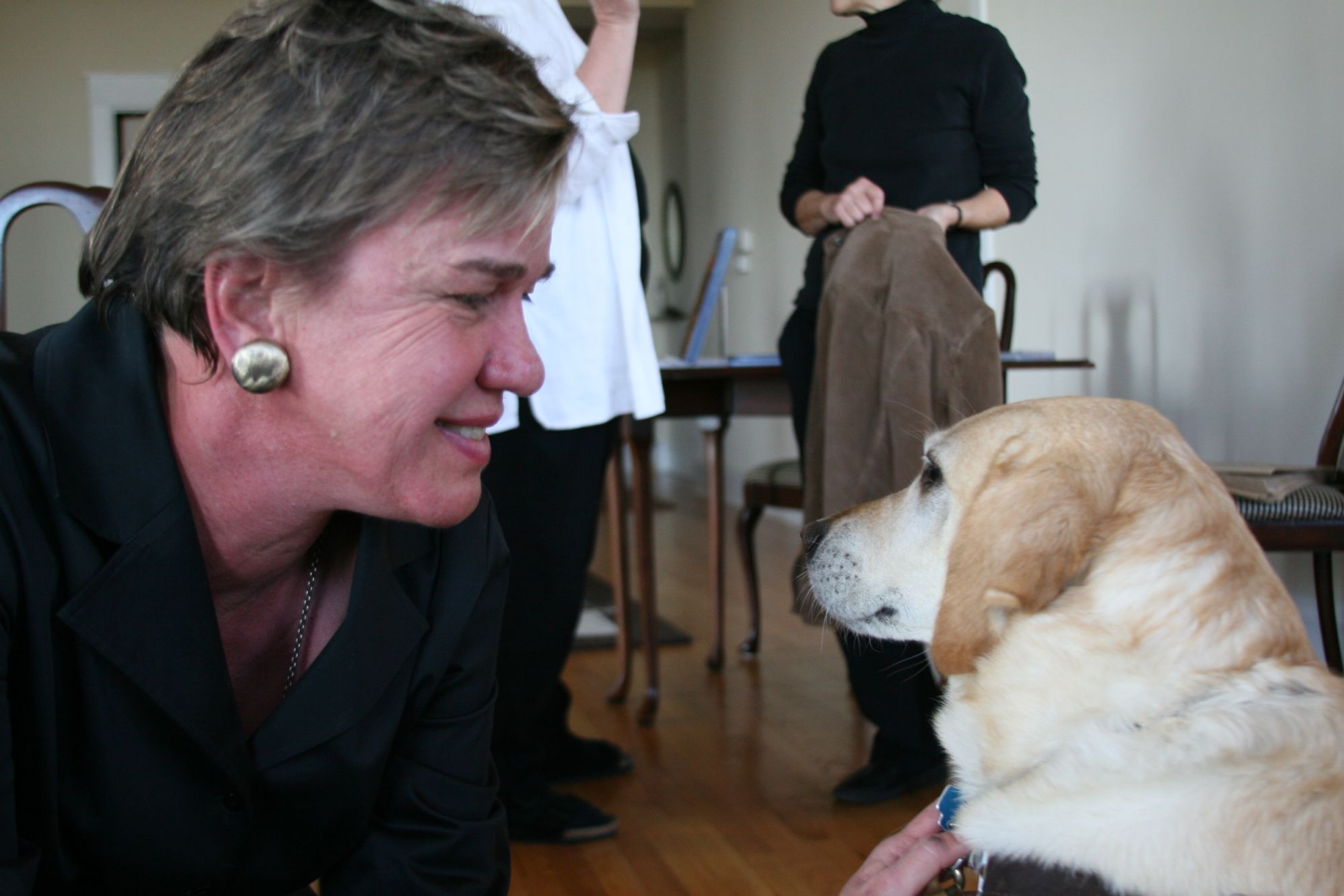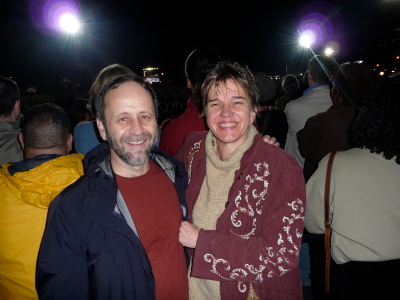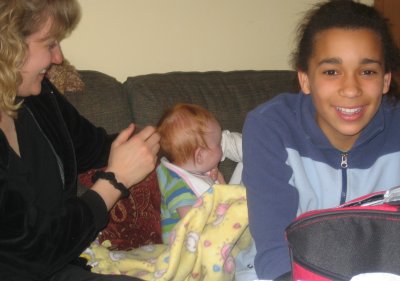Dignity
November 15, 2008 • 10 Comments • Posted in blindness, book tour, guide dogs, Seeing Eye dogs, Uncategorized
Over 300 kids gathered in Nelson Elementary School’s gymnasium Thursday morning to hear me give a talk about my blindness, my children’s book and my bond with my Seeing Eye dog.
Okay. That’s a lie. The reason they came had nothing to do with me. They were there to see Hanni! A second group of 300 would come to the gym in the afternoon. Both groups were full of good, curious listeners. And like always, they had great questions. In-between presentations Hanni and I spent time in Helen Lee’s fourth-grade class — Helen is the teacher who coordinated our visit to nelson. I took Hanni’s harness off while we were in that classroom – that way she could run around a bit and enjoy belllyrubs from the kids. One kid who’d been rolling around on the floor with Hanni jumped up afterwards and asked, “What’s the best thing about having a Seeing Eye dog?”
There were so many ways to answer that question. Hanni helps me feel safe, Hanni keeps me company, Hanni gives me courage, Hanni does so much for me. But the best thing? “She makes it so people don’t feel sorry for me,” I said.
“Instead of staring at me because I’m blind, they look at her — they think she’s cool!”
The fourth-grader understood.
A story published in the New York Times last Tuesday (Veterans Day) tells me that injured veterans paired with dogs feel the same way I do. The article quotes Harvey Naranjo, who works with severely disabled veterans at Walter Reed Hospital.
“Veterans can feel vulnerable walking around with these disabilities,” Mr. Naranjo said. “When they go out with a service dog, it draws attention away from the injury.”
The story goes on to highlight three soldiers – two men and one woman. I think Sue Downes, a 28-year-old mother of two said it best. Downs was a military police officer in 2006, when her military vehicle exploded after hitting an improvised explosive device. In August 2007 she was paired with Lila, a yellow Labrador who helps her walk with her prosthetic legs.
Ms. Downes is retired from the Army and said she feels that she has adjusted “pretty well,” with good days and bad. She tires easily and does not go out as much as she used to. However, on a good day she and Lila might visit the local veterans association or shop for groceries; Lila also likes to go to PetSmart. Ms. Downes said she was thankful that while out in public, people tended to pay more attention to Lila than to her disability.
When I went to train with my first Seeing Eye dog, a Black Lab named Pandora, I thought the best thing she’d do for me was lead me places without bumping me into things. After a few months home with her, I honest-to-God noticed I felt taller – I was holding my head up higher – when I traveled anywhere with Pandora. Same goes now, with Hanni. Who would’ve guessed? Dogs can provide the one thing everybody needs: dignity.



